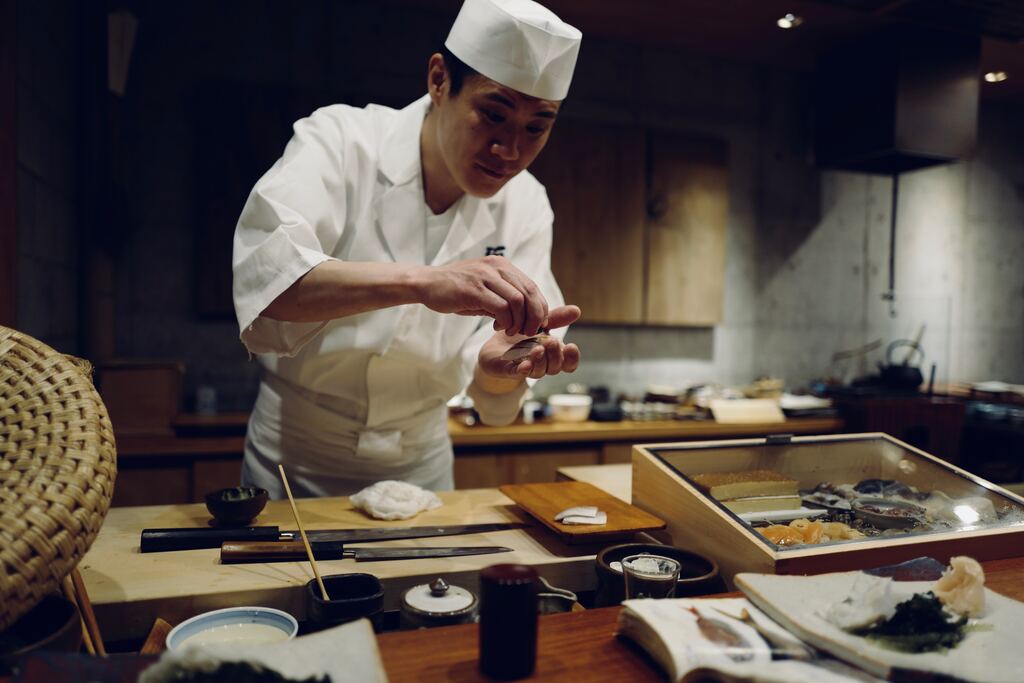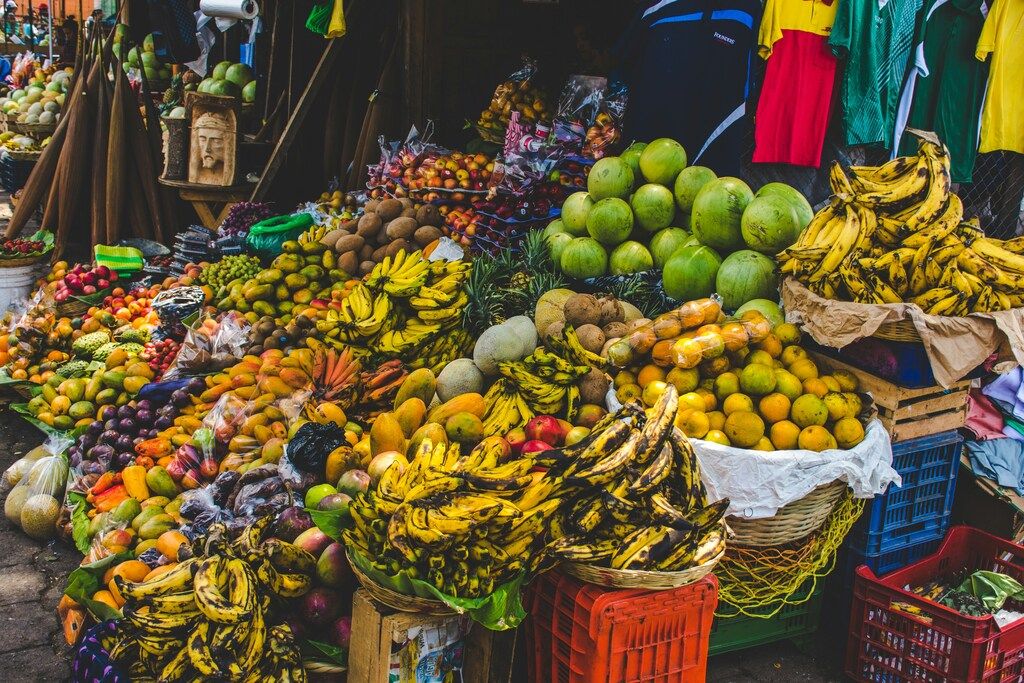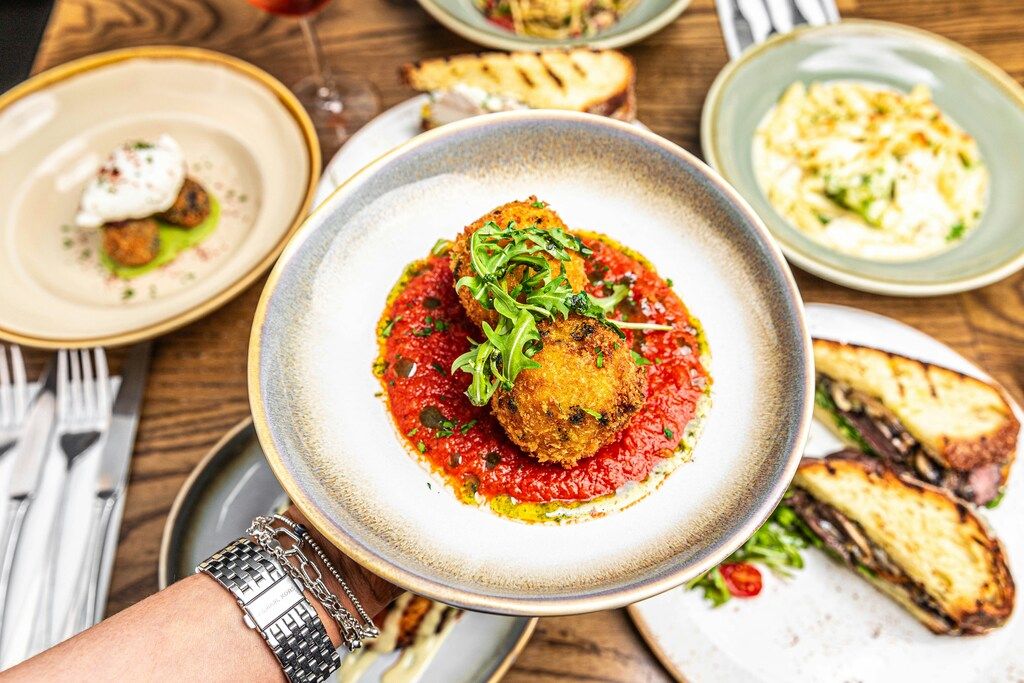

Sicily blends history, culture, and nature into a breathtaking landscape unlike anywhere else in the world. Sicilian food is a flavorful journey shaped by Greeks, Arabs, and Spanish influences across centuries. Think Italian food? You imagine pasta sauces and pizza that made Italy globally famous.
Now, you might think Sicilian and Italian foods are quite similar if you haven’t properly tasted both. But while all Sicilian food is Italian, not all Italian foods contain the zest of Sicily. Sicilian cuisine emphasizes seafood and spices, influenced by Middle Eastern and Italian traditions.
Discover the heart of Sicily with this guide to the island’s most iconic street foods. Arancini and cannoli offer bites full of tradition and bursting with authentic Sicilian flavor.
Arancini: Sicily’s iconic crispy rice balls with a molten heart
When you imagine typical Sicilian street food, arancini should be what first comes to mind. This delicious rice ball has a fried crust and a centre that’s molten and sticky. It’s often filled with several ingredients, chief among which is ragù, a classic slow-cooked meat sauce. In eastern Sicily, arancini use ragù, while western versions often have ham and butter fillings.
However, these aren’t the only fillings. You can find arancini made with mushrooms, spinach, pistachio cream, and even a salty richness of ricotta and mozzarella. Cultural influences make Sicilian food incredibly diverse in ingredients, flavors, and preparation styles.
Once formed into balls, these snacks get their exotic shape from the mixture and are held together by the breadcrumbs. Each bite into arancini brings a crispy shell and a flavorful surprise inside.
Arancini, or arancina in the west, are perfect as light lunches or street snacks. You can find it in the Cefalù market or, often, in stalls on the side of the road. Saffron-seasoned rice is shaped, breadcrumb-coated, and deep-fried into golden, crispy arancini balls. While you stroll around the markets of Catania or Palermo, this rice ball is a treat to try.
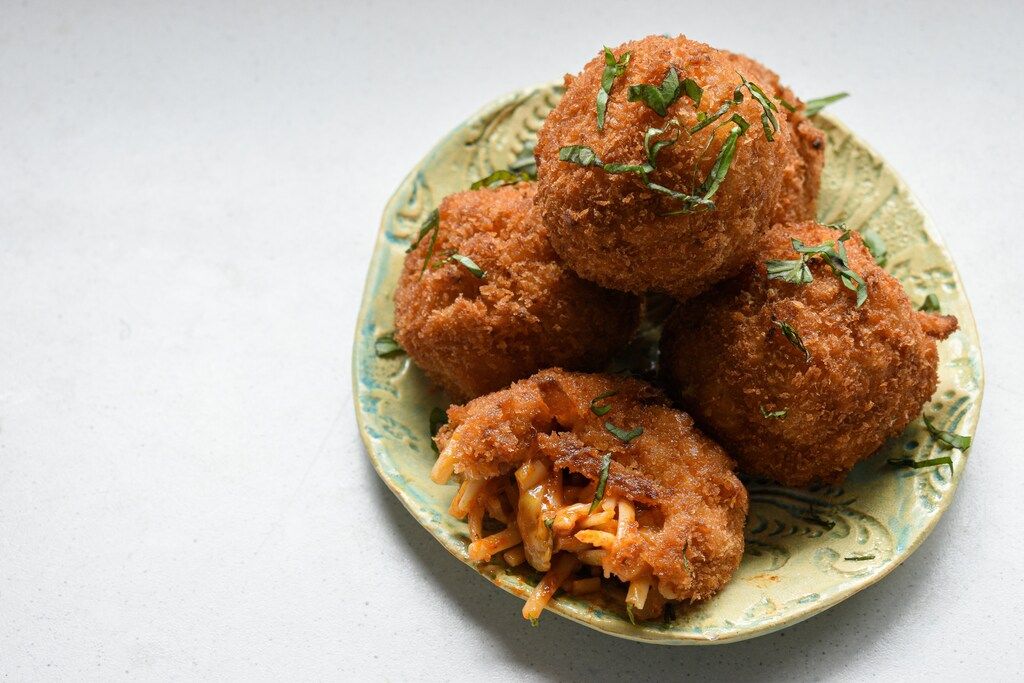
Pasta alla Norma: the classic Catania dish that defines Sicilian comfort
Pasta alla Norma is the quintessential Sicilian comfort food. It is a good representation of all that’s important about Sicilian food: simplicity, use of seasonings, and high-quality ingredients. This pasta dish got its name from the famous composer Vincenzo Bellini’s most famous work, Norma. It is arguably the most popular pasta dish in Sicily, reflecting the soul of Sicilian kitchens.
Pasta alla Norma features pasta with roasted eggplant, tomato sauce, and a generous topping of ricotta salata. Ricotta salata adds sharpness and texture, balancing the tomato sweetness in Pasta alla Norma.
Roasted or fried eggplant balances its bitterness with the sauce’s sweet tomatoes. Ricotta salata crumbles add saltiness and contrast to the soft pasta and sauce. Though comforting, Pasta alla Norma reflects Sicily’s rich culinary and cultural history. Eggplant, brought by Arabs, symbolizes Sicily’s historical blend of traditions and ingredients.
In Catania, locals try Pasta alla Norma at different trattorias because each version has a unique twist. Some recipes add garlic, basil or breadcrumbs for extra depth and texture. The classic version uses only four ingredients — perfect for recreating Sicilian flavours at home.
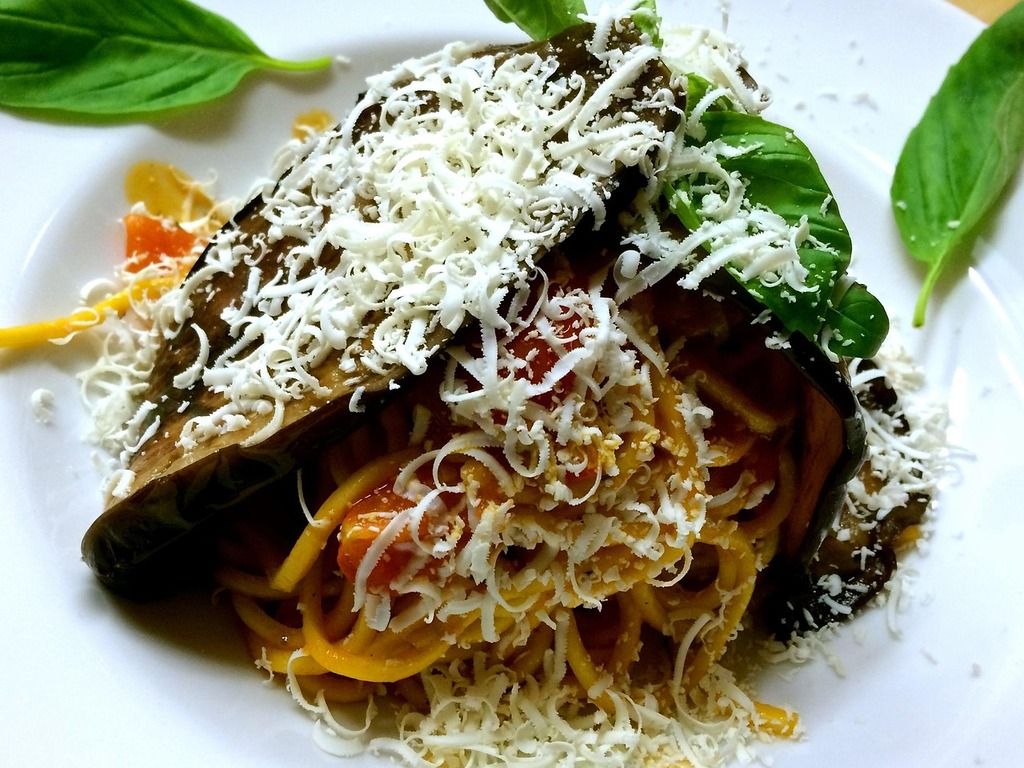
Caponata: a sweet and sour vegetable dish that’s more than a side
Another Sicilian side dish full of elementary ingredients and complex flavours is Caponata, a sweet and sour vegetable treat served as a side dish in Sicily, but can be eaten as a light meal. Tourists often find this dish so delicious that they ask for more, even though it is a side dish. Caponata is made up of layers of flavours that come together beautifully. It starts with eggplant, sautéed and combined with sautéed onions and celery. Some vinegar and sugar is added to give that delicious sweet and sour taste that pairs perfectly with the eggplant. Many Sicilians often include a healthy dose of tomato passata to make it especially saucy.
It’s customary to eat it at room temperature or warm, but it’s not uncommon for some to prefer it cold. The balance of bold flavours that comes through when eating Caponata is a reflection of the Sicilian people’s history and influences. The dish originated from Arabia, where the tradition of pairing sweet and sour flavours is common. Gradually, it became a Sicilian classic with every part of the large island making their own versions. It’s common in Palermo, the capital of Sicily, to find a caponata that contains pine nuts, while in some rural areas, they might prefer one that includes fresh tomatoes or is full of vinegar.
However, there’s more to love than just its flavour. Caponata exemplifies Sicilian cuisine. It celebrates gutsy amounts of flavour and a philosophy of turning something simple into something seemingly complex, yet completely soul-warming, gut-hugging and satisfying. It’s the best kind of side dish with a main course or an ideal main course for someone who simply wants some substance.
Panelle and sfincione: Palermo’s irresistible street food staples
The regional capital of Sicily, Palermo, is the beating heart of Sicilian street food. Walk through the buzzing markets of the Sicilian capital and you’ll be hit with the fragrance of panelle (chickpea fritters) and sfincione (a kind of Sicilian pizza) frying in the pans.
Chickpea fritters are made with nothing more than chickpea flour, water, and some fresh herbs. The mixture is cooked into a kind of porridge, set, and deep-fried until crisp and beautifully golden. Sfincione, on the other hand, is a world away from Neapolitan pizza. A thick, spongy focaccia-like base is covered in sweet tomato sauce, onions, anchovies, and breadcrumbs and baked until crisp and golden around the edges.
Eaten in squares and sold at room temperature, sfincione makes for the perfect snack or light lunch. These popular street foods reflect Palermo’s lively food culture. The fact that the city’s inhabitants prioritise fresh fare even in street food taps into the city’s love for an unpretentious, ‘live life to the full’ attitude. When in Palermo, you should try these local specialities. You’ll find them at street vendors on almost every corner of the city, from the sprawling Ballarò Market to the narrow streets of the Kalsa.
Cannoli and cassata: sweet symbols of Sicilian tradition
A taste of Sicily isn’t complete without a sample of the island’s two most famous desserts: cannoli and cassata.
Perhaps Sicily’s most famous sweet creation, cannoli consist of a tube of crispy fried pastry which encases a sweet ricotta cheese mixture, sometimes studded with dark chocolate chips, pistachios, or candied fruit. It’s the sweet ricotta filling paired with the crunch of the tender cannoli shell that makes these sweet treats so irresistible. They’re enjoyed year-round but are particularly popular during the festive seasons when they are lovingly prepared at home by families.

Cassata is a rich and sumptuous cake traditionally from the city of Palermo. Layers of sweetened sheep’s milk ricotta cheese are separated by moist sponge cake soaked in liqueur in a way similar to a trifle. The sweet and creamy ricotta cheese is dotted with dyed candied fruit and marzipan, and the entire confection is topped with a layer of sugary almond paste and a simple white icing.
The cake is left to rest, allowing the ricotta filling to set before it’s sliced into and served in thick wedges. Both cannoli and cassata are a treat often shared among family and friends during festive occasions.
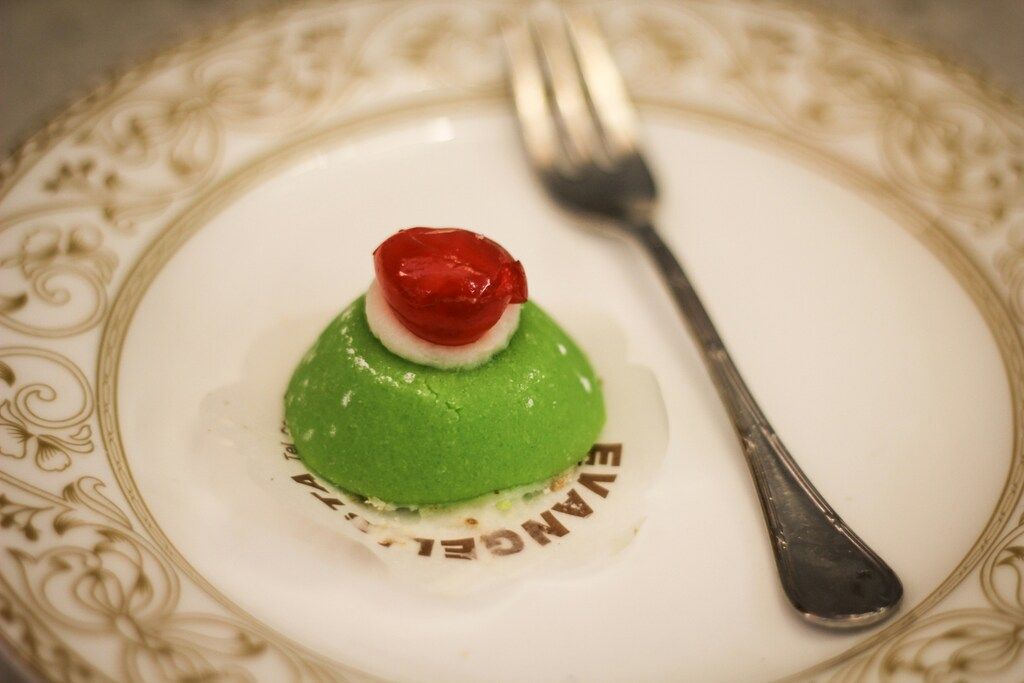
Fresh seafood and market culture: eating like a local in coastal towns
Life in the small coastal towns of Sicily revolves around fresh seafood. The island markets like those in Catania, Trapani, and Palermo are some of the busiest spaces with fishmongers proudly displaying their daily catches: huge swordfish, silvery sardines, fatty octopus, squid, and spiny sea urchins, the classic flavours of the Mediterranean straight from bountiful Sicilian waters.
Home to fresh seafood, traditional Sicilian street food, and friendly locals, Sicily lures visitors who can’t get enough of the scenery and seafood. Of course, any kind of snack or meal you enjoy under the sun or in the breezy shade of an olive tree, washed down with a full-bodied local wine, will seem all the sweeter for the warm welcome of the islanders.
Food in Sicily is often simple, and seafood even more so, relying on the quality and freshness of the catch and prepared as lightly as possible. Grilled or roasted until soft and buttery, fish is dressed with only a splash of olive oil, a squeeze of fresh lemon, and maybe some sea salt. If you like the sound of this simple yet satisfying fare, you can find plenty of restaurants or trattorias in the coastal towns that serve it.
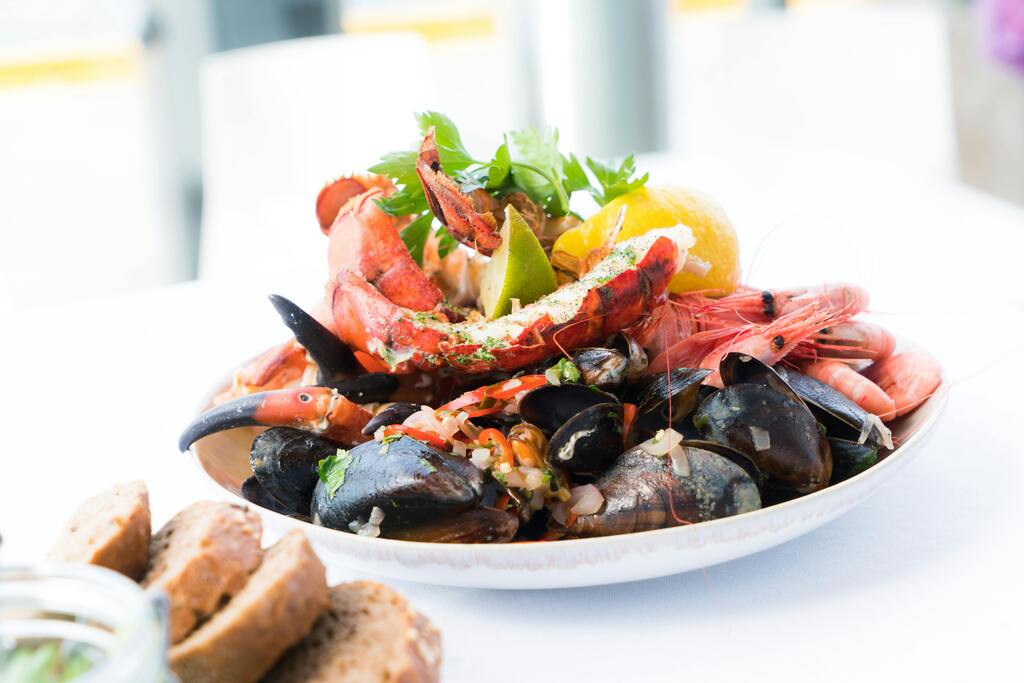
How Sicilian food differs from the rest of Italy: history on a plate
Is Sicilian food different from Italian food? The food in Sicily is different from the rest of Italy because Sicilian cuisine is as rich as history. The island’s food bears witness to all the cultures that have passed through it over the past two and a half millennia. Sicily has seen eras through medieval Normandy, Swabian, and Aragonese rule before the Arab era. The cuisine of this island reflects all these in its fruitful mix of ingredients and flavours. Surprising as it may sound, Sicilian food and drink are different from Italian cuisine in many ways, including their intense flavours.
Additionally, poverty has much to do with the richness and depth of flavour in Sicilian foods. The recipes of traditional Sicilian dishes were originally designed for peasants, and the people have long been among the poorest in Italy, supporting themselves with simple peasant dishes that emerged from the poorest parts of the earth. In so doing, Sicilians created a food culture that is richer and tastier than their Northern Italian counterpart, which has more money than culinary wealth. You can learn more about Italian food traditions to understand how the unique history has shaped the fabulous character of Sicilian food.

Come for the views, stay for the food: Sicily is a feast for the senses
In Sicily, food isn’t just fuel for the body; it’s the spice of life. In its bustling street markets and seaside restaurants, every meal is a treasure trove of culinary history. The food is a reflection of the island’s people: passionate, proud, and steeped in tradition. The Sicilians are quick to invite you into their homes to share a meal and a laugh. And while those shared moments will come and go, the memory of their delicious dishes will linger for years.
The best way to taste Sicily is to go on an island-hopping adventure with a trusty guide. Get the best of Sicily’s flavours and hidden culinary hotspots around town and markets, and your tastebuds will thank you. This is why you must experience Sicily with an organised group tour to enjoy all the sights, sounds, and foods you won’t find anywhere else. Eating an arancini and enjoying the fruits of the sea is just the beginning when you visit this amazing island.
Frequently Asked Questions About Sicilian Food
What makes Sicilian cuisine unique?
Sicilian cuisine has a distinct identity shaped by centuries of history. It features a unique blend of flavours with Greek, Arab, and Spanish influences, setting it apart from mainland Italian food. The dishes are characterized by bold flavours, fresh seafood, and aromatic spices.
What are the must-try street foods in Sicily?
When exploring Sicily, you’ll find a vibrant street food culture. Some of the most popular options include:
- Arancini: Deep-fried rice balls with various fillings.
- Panelle: Crispy fritters made from chickpea flour.
- Sfincione: A thick, spongy pizza often topped with tomatoes, onions, and anchovies.
What is an arancino?
An arancino is a crispy, golden rice ball that is a cornerstone of Sicilian street food. The rice is typically filled with a variety of ingredients, then coated in breadcrumbs and deep-fried. Common fillings can vary by region, with popular choices being:
- A rich meat ragù.
- Ham and butter.
- Mushrooms, spinach, or pistachio cream.
What is sfincione?
Sfincione is the traditional Sicilian-style pizza, known for its thick, soft, and spongy base. Unlike a typical pizza, it’s usually topped with a simple combination of tomato sauce, onions, anchovies, and a sprinkle of breadcrumbs.
What is Sicily’s most famous pasta dish?
The most iconic pasta dish from Sicily is Pasta alla Norma. Originating from the city of Catania, it is a beloved and hearty vegetarian dish.
What are the key ingredients in Pasta alla Norma?
Pasta alla Norma is a celebration of simple, flavourful ingredients. It is made with:
- Pasta (typically macaroni or a similar short shape).
- Roasted or fried eggplant.
- A fresh tomato sauce.
- A generous topping of grated ricotta salata (salted ricotta cheese).
What is caponata?
Caponata is a classic Sicilian vegetable dish with a distinctive sweet and sour flavour profile. It is primarily made with fried eggplant, celery, and onions, all brought together with a sauce of vinegar and sugar. It’s a versatile dish, often served as a side or a light meal on its own.
What are the most famous Sicilian desserts?
Sicily is renowned for its desserts. The two most famous and unmissable treats are:
- Cannoli: Crispy pastry tubes filled with a sweet, creamy ricotta cheese mixture.
- Cassata: A rich and ornate sponge cake layered with sweet ricotta and decorated with marzipan and candied fruit.
What is a Sicilian cannolo?
A Sicilian cannolo (plural: cannoli) is a dessert made from a tube-shaped shell of fried pastry dough. The crispy shell is then filled with a luscious, sweet filling made from sheep’s milk ricotta. The ends are often decorated with dark chocolate chips, chopped pistachios, or candied fruit.


